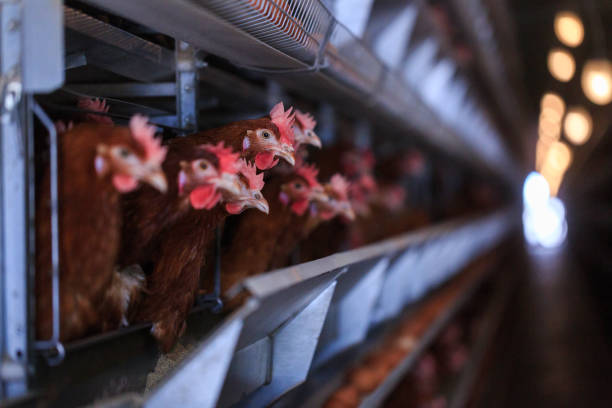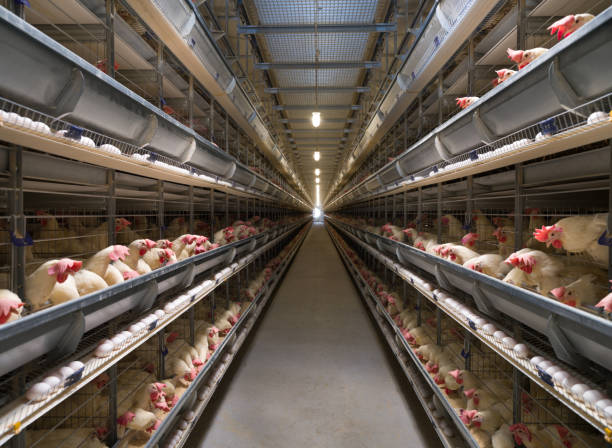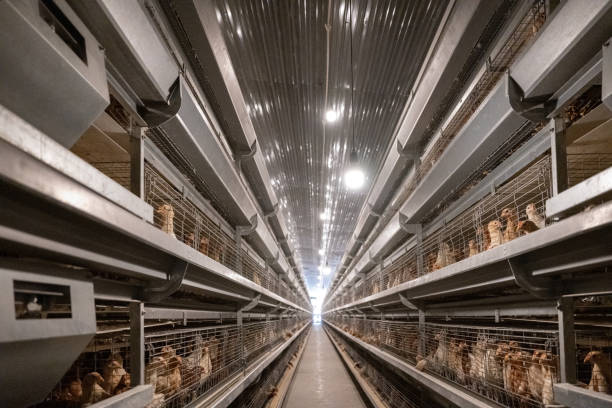
Find the Best Deals on Poultry Cage Systems for Your Farm
Find the Best Deals on Poultry Cage Systems for Your Farm

If you’re running a poultry farm, you know how crucial it is to have the right equipment. Poultry cage systems are a cornerstone of modern poultry farming, impacting everything from bird welfare and egg production to overall farm efficiency and profitability. However, with so many options available, finding the “best deal” can feel overwhelming. This article breaks down what to consider when searching for poultry cage systems, helping you make a smart investment that will benefit your farm for years to come.
**What to Consider Before Hunting for Deals**
Before diving headfirst into comparing prices, take a step back and honestly assess your farm’s needs. This will prevent you from getting swayed by seemingly “good deals” that don’t actually suit your operation.
* **Type of Poultry:** Are you raising egg-laying hens (layers), meat chickens (broilers), or both? Layer cages and broiler cages are designed differently to accommodate the specific needs of each type of bird.
* **Farm Size and Capacity:** How many birds do you currently have, and what are your plans for expansion? A small farm might only need a few cage units, while a large-scale operation will require a much more extensive system.
* **Available Space:** Measure your poultry house carefully. The dimensions will dictate the size and configuration of the cage system you can install. Consider both floor space and ceiling height.
* **Climate:** Your local climate will influence the features you need in a cage system. In hot climates, ventilation is key, while colder regions necessitate good insulation.
* **Budget:** Determine your budget upfront. This will help you narrow down your options and avoid wasting time looking at systems that are outside your price range. Remember to factor in not only the initial purchase cost but also installation, maintenance, and operating expenses.

* **Regulations:** Be aware of any local or national animal welfare regulations that might impact your choice of cage system. Some regions have specific requirements for space allowance, cage design, and environmental control.
**Types of Poultry Cage Systems**
Understanding the different types of poultry cage systems is crucial to making an informed decision. Here’s a rundown of the most common options:

* **Layer Cages (Egg-Laying Hens):**
* **A-Frame Cages:** These are the most traditional type of layer cage. They are arranged in rows, with cages stacked on top of each other in an “A” shape. A-frame cages are relatively inexpensive and easy to install.
* **H-Frame Cages:** Similar to A-frame cages, but with a more robust structure in an “H” shape. H-frame cages offer better stability and can accommodate more birds.
* **Stacked Cages (Tiered Cages):** These systems consist of multiple tiers of cages stacked vertically. Tiered cages maximize space utilization and are ideal for farms with limited floor space.
* **Manure Removal Systems:** Manure removal systems can be manual or automatic, the automatic manure removal systems could be scraper type, belt type etc.
* **Broiler Cages (Meat Chickens):**
* **Flat Deck Cages:** These cages typically have a single level. They are arranged in rows, with feeding and watering systems running along the length of the cages.
* **Multi-Tiered Broiler Cages:** These systems are less common than flat deck cages, there are two tiers or three tiers, but it can greatly increase stocking density.
**Key Features to Look For in a Poultry Cage System**
Once you know the type of cage system you need, it’s time to focus on specific features. These features will impact bird welfare, egg production (for layers), and overall farm efficiency.
* **Cage Material:** Galvanized steel is the most common material for poultry cages. It’s durable, rust-resistant, and easy to clean. Look for cages made from high-quality galvanized steel with a thick coating.
* **Cage Design:** The cage design should provide adequate space for the birds to move around comfortably. The floor should be slatted or wire mesh to allow manure to fall through, keeping the cages clean and dry. Be careful with the gap width of the mesh which can decide the health and number of the poultry.
* **Feeding System:** The feeding system should be designed to provide all birds with equal access to food. Automatic feeding systems are available, which can save labor and ensure consistent feeding.
* **Watering System:** A reliable watering system is essential for poultry health. Nipple drinkers are a popular choice, as they provide clean water and minimize spillage.
* **Ventilation:** Proper ventilation is crucial for maintaining a healthy environment in your poultry house. Look for cage systems that are designed to promote airflow and prevent the buildup of ammonia and other harmful gases.
* **Egg Collection System (for Layers):** Automatic egg collection systems can save a significant amount of labor and reduce egg breakage.
* **Manure Removal System:** Efficient manure removal is essential for maintaining hygiene and preventing disease. Scraper systems, belt systems, and flushing systems are all common options.
* **Lighting System:** Proper lighting is essential for egg production (for layers) and broiler growth. LED lighting is energy-efficient and provides the correct spectrum of light for poultry.
**Finding the Best Deals: Strategies and Resources**
Now that you know what to look for, let’s explore some strategies for finding the best deals on poultry cage systems.
* **Research Multiple Suppliers:** Don’t settle for the first quote you receive. Contact several reputable poultry equipment suppliers and compare their prices, features, and warranties.
* **Request Detailed Quotes:** Make sure the quotes you receive include all costs, such as the price of the cages, installation, shipping, and any additional equipment.
* **Look for Discounts and Promotions:** Many suppliers offer discounts for bulk orders or seasonal promotions. Don’t be afraid to ask about available discounts.
* **Consider Used Equipment:** Purchasing used poultry cages can be a cost-effective option, especially for smaller farms. However, carefully inspect used equipment to ensure it’s in good condition and meets your needs.
* **Attend Industry Trade Shows:** Trade shows are a great place to see the latest poultry equipment and meet with suppliers face-to-face. You can often find special deals and discounts at trade shows.
* **Read Reviews and Testimonials:** Before making a purchase, read reviews and testimonials from other poultry farmers who have used the cage system you’re considering. This can give you valuable insights into the system’s performance and reliability.
* **Check Online Marketplaces:** Websites , and Alibaba offer a wide selection of poultry cage systems from various suppliers. Compare prices and read reviews carefully before making a purchase.
* **Consider Local Suppliers:** Working with a local supplier can offer several advantages, such as faster delivery times, easier access to support, and a better understanding of local regulations.
* **Don’t Compromise on Quality:** While price is important, don’t sacrifice quality for a lower price. Cheap cages may not be durable or provide adequate space for your birds, which can lead to reduced production and increased health problems.
* **Evaluate the Total Cost of Ownership:** Consider the long-term costs of owning a poultry cage system, such as maintenance, repairs, and energy consumption. A system with a lower initial cost may end up being more expensive in the long run.
**Questions to Ask Potential Suppliers**
When contacting potential suppliers, be sure to ask the following questions:
* **What is the cage material and thickness?**
* **What is the cage capacity (birds per cage)?**
* **What are the dimensions of the cage?**
* **What type of feeding and watering system is included?**
* **Is an automatic egg collection system available (for layers)?**
* **What type of manure removal system is included?**
* **What is the warranty on the cage system?**
* **What is the estimated lifespan of the cage system?**
* **Do you offer installation services?**
* **What is the lead time for delivery?**
* **Do you have any customer references I can contact?**
* **What is the price of the cage system, including all costs?**
* **What after-sales service do you provide?**
* **What certifications do you have?**
**Common Mistakes to Avoid**
* **Choosing a cage system that is too small:** Overcrowding can lead to stress, disease, and reduced production.
* **Ignoring ventilation requirements:** Proper ventilation is essential for poultry health and productivity.
* **Failing to consider manure removal:** Efficient manure removal is crucial for maintaining hygiene and preventing disease.
* **Neglecting maintenance:** Regular maintenance is essential for extending the lifespan of your poultry cage system.
* **Buying from an unproven supplier:** Choose a supplier with a good reputation and a proven track record.
* **Not considering the long-term costs:** Evaluate the total cost of ownership, including maintenance, repairs, and energy consumption.
* **Overlooking animal welfare:** Choose a cage system that provides adequate space and comfort for your birds.
**Making the Right Choice**
Finding the best deals on poultry cage systems requires careful research, planning, and comparison. By considering your farm’s specific needs, understanding the different types of cage systems available, and following the strategies outlined in this article, you can make a smart investment that will benefit your operation for years to come. Remember to prioritize quality, animal welfare, and long-term cost-effectiveness over simply finding the lowest price. With the right poultry cage system, you can improve bird health, increase egg production (for layers), and maximize the efficiency of your farm.
